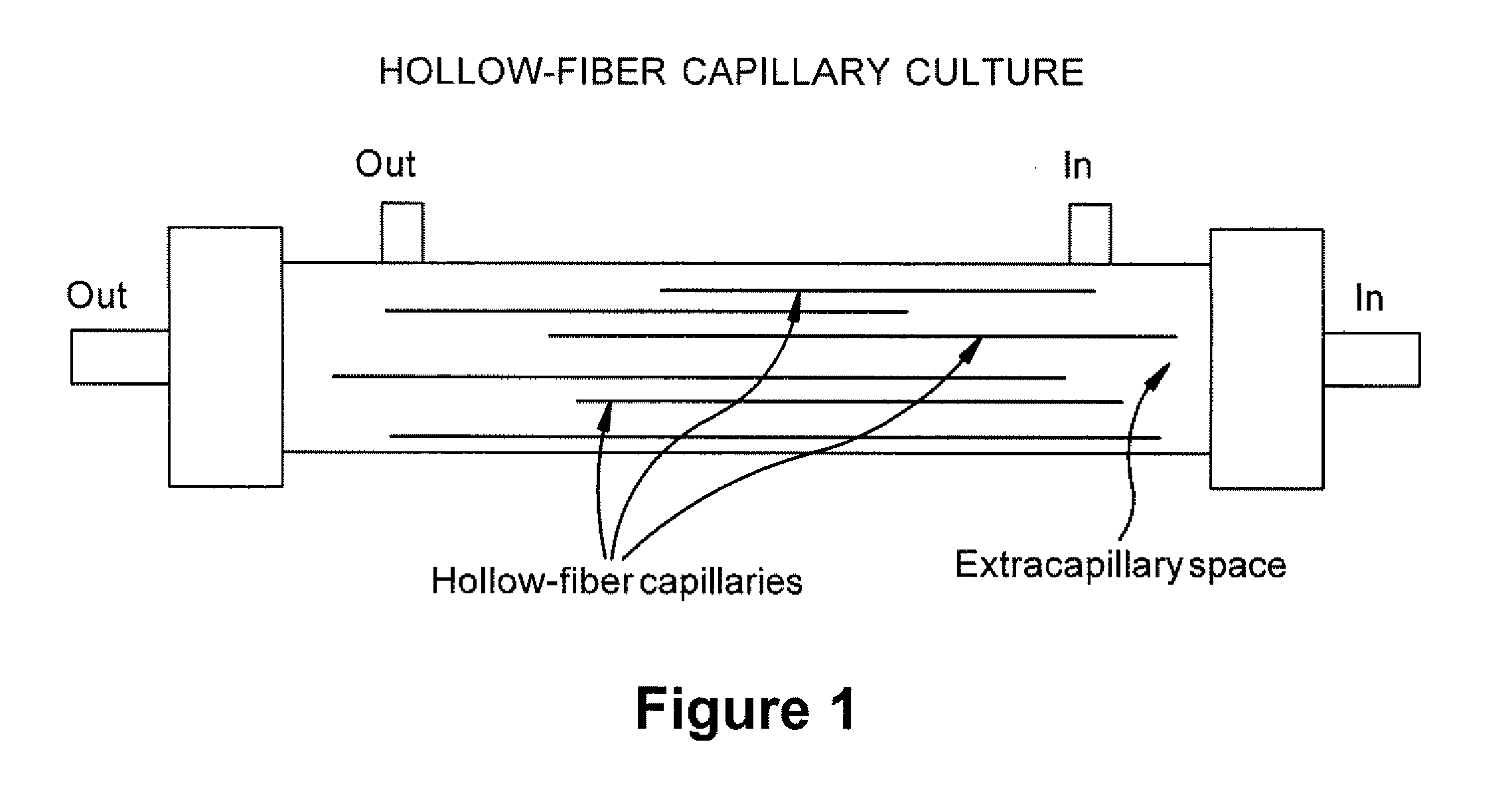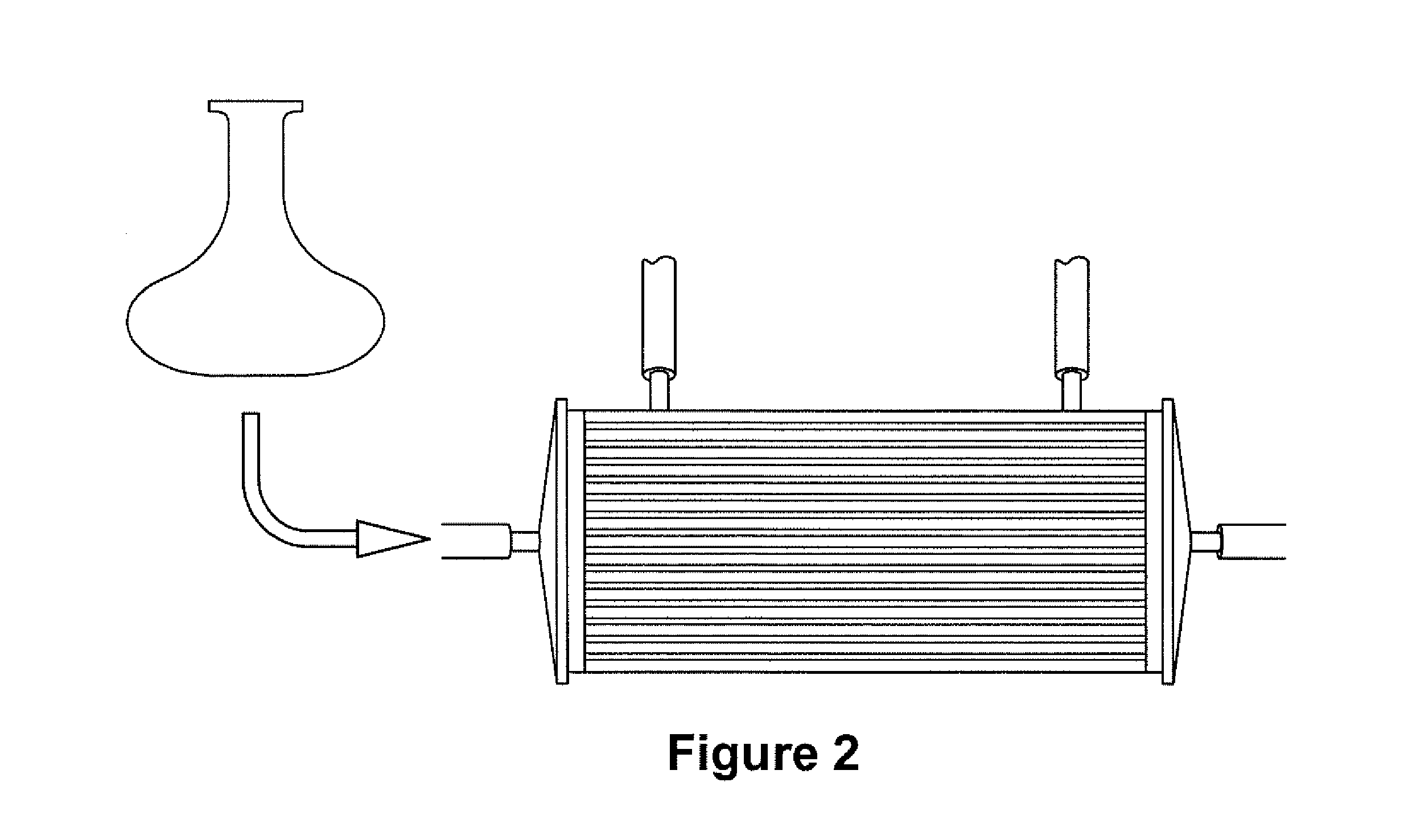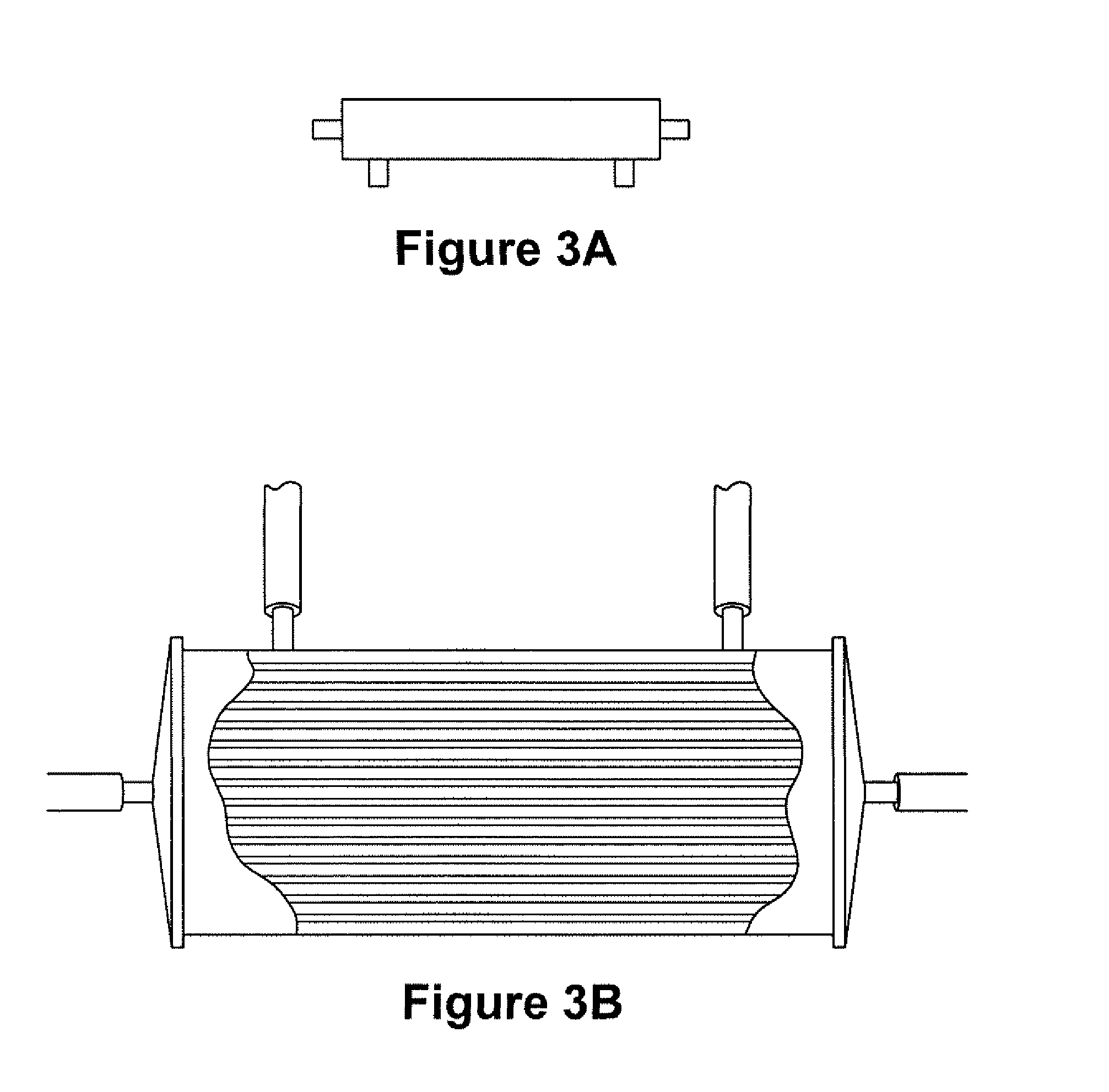Expansion of Stem Cells in Hollow Fiber Bioreactors
a technology of hollow fiber and stem cells, applied in the direction of biocide, artificial cell constructs, skeletal/connective tissue cells, etc., to achieve the effect of facilitating cell harvesting, increasing flow rate, and enhancing cell attachmen
- Summary
- Abstract
- Description
- Claims
- Application Information
AI Technical Summary
Benefits of technology
Problems solved by technology
Method used
Image
Examples
example 1
Expanding MultiStem from a Cell Bank by Means of a Hollow Fiber Bioreactor Cell Expansion System
[0192]A cell expansion system, essentially as described in U.S. 2008 / 0220523 and Antwiler et al., was used to expand an input population of MultiStem, which is a substantially homogeneous population. The system was designated Quantum CES. It provided a bench-top expansion system that is particularly useful for autologous expansion. (But it is also useful for allogeneic expansion.) Based on the results shown in this application, greater than 108 cells can be obtained from a single donor.
[0193]Multi-Stem was thawed after having been stored in a frozen cell bank. For two experiments, 10×106 MultiStem were inoculated into a continuous flow bioreactor with an internal fluid volume of 184 ml and an external fluid volume of 303 ml, containing 1.1×104 hollow fibers with a total surface area (intra-capillary) of approximately 2.1 m2 (3255 in2), a wall thickness of 50 μm, inner diameter of 215 μm, ...
example 2
Producing MultiStem from Bone Marrow in a Hollow Fiber Bioreactor Cell Expansion System
[0202]The cell expansion system described above was used to produce MultiStem from bone marrow mononuclear cells. The expansion results are shown in FIG. 6. In one possible regimen, starting from a bone marrow aspirate, it is possible to create a MultiStem master cell bank within 17 days. This takes one run from bone marrow to 15 population doublings and an expansion run to this harvest to reach a population doubling of 18.5 and an average of ten runs to create a master cell bank (200 vials of 20 million cells). These 200 vials can then be used to create working cell banks. The schematic is shown in FIG. 7. However, the master cell bank could be increased or decreased, such as up to 10-fold more cells or down to 10-fold less cells.
[0203]The output cells, following expansion, had the immunomodulatory properties associated with MultiStem and expressed telomerase.
PUM
 Login to View More
Login to View More Abstract
Description
Claims
Application Information
 Login to View More
Login to View More - R&D
- Intellectual Property
- Life Sciences
- Materials
- Tech Scout
- Unparalleled Data Quality
- Higher Quality Content
- 60% Fewer Hallucinations
Browse by: Latest US Patents, China's latest patents, Technical Efficacy Thesaurus, Application Domain, Technology Topic, Popular Technical Reports.
© 2025 PatSnap. All rights reserved.Legal|Privacy policy|Modern Slavery Act Transparency Statement|Sitemap|About US| Contact US: help@patsnap.com



